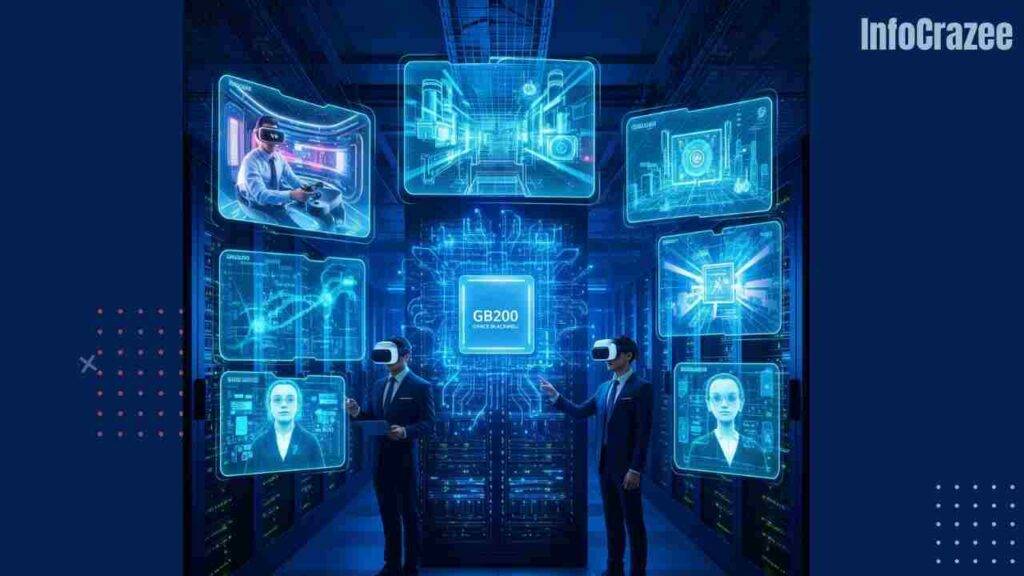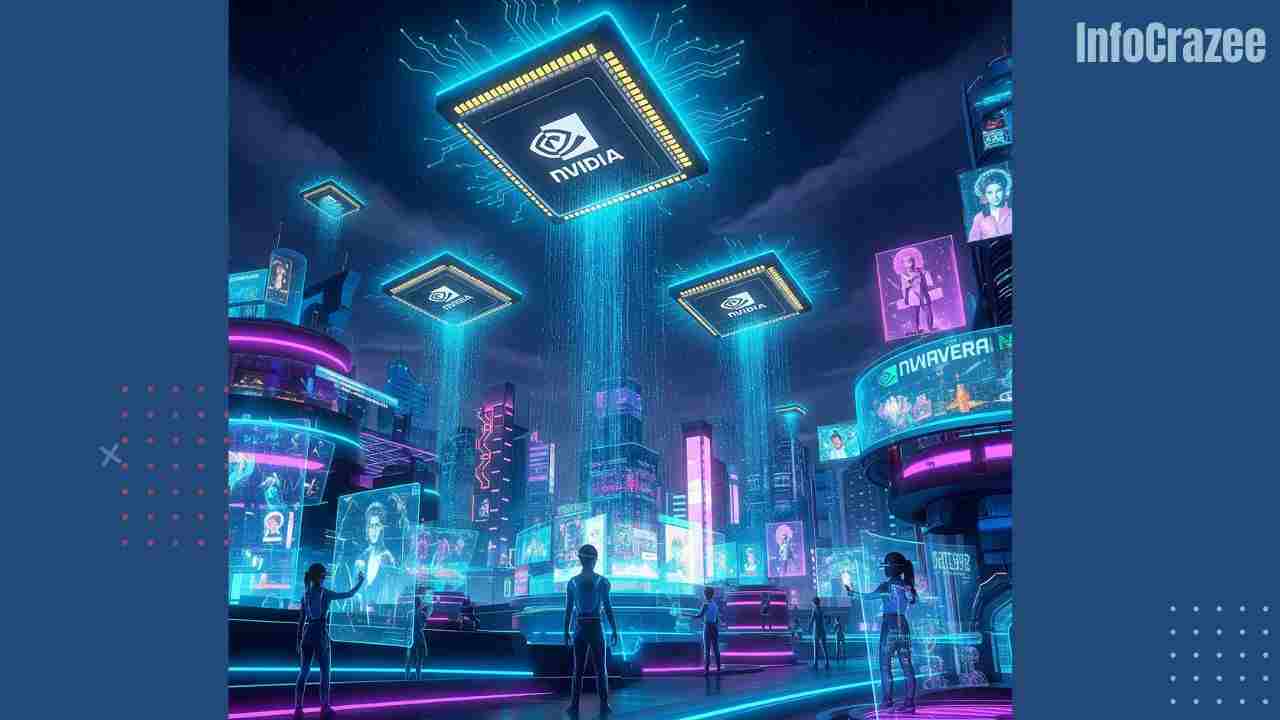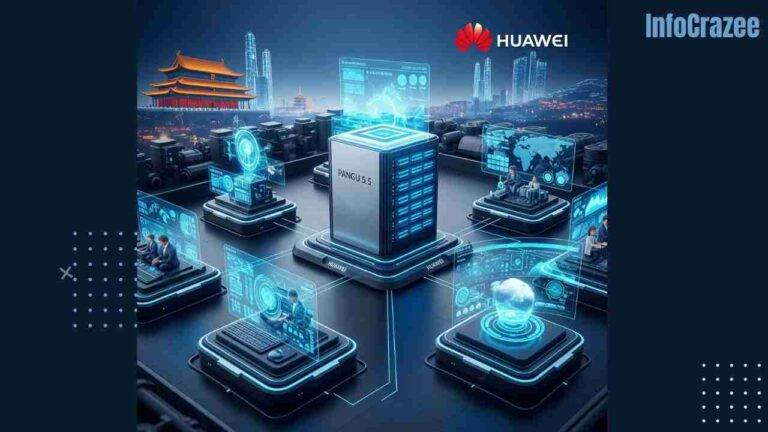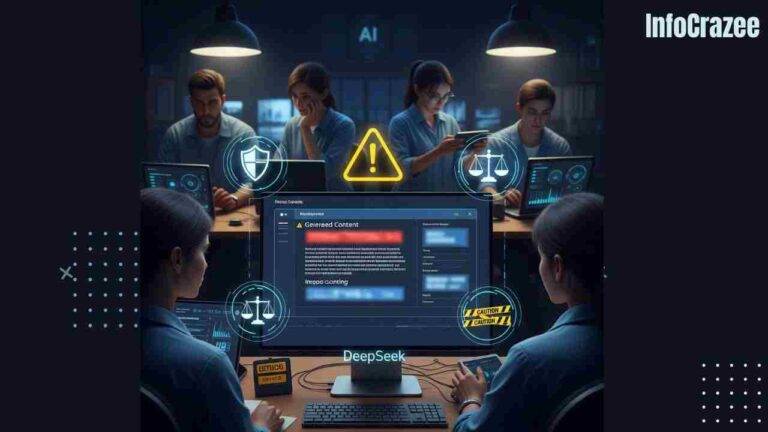Nvidia’s AI Superchips Launch to Supercharge the Metaverse in 2025!
Get ready to step into the metaverse like never before! Nvidia has just dropped its latest AI superchips for metaverse applications, designed to power immersive virtual worlds, augmented reality (AR), and digital twins with jaw-dropping performance. Announced at their 2025 GPU Technology Conference (GTC), these chips are set to redefine how we work, play, and create in 3D spaces. Here’s the scoop on what’s new, why it’s exciting, and how Nvidia is shaping the future of the metaverse.
What Are Nvidia’s AI Superchips for the Metaverse?
Nvidia’s new chips, built on the cutting-edge Blackwell architecture, are engineered to handle the massive computing demands of metaverse applications. From virtual reality (VR) gaming to industrial digital twins, these AI superchips for metaverse bring unprecedented power and efficiency to create seamless, interactive 3D experiences.

- Blackwell Powerhouse: The GB200 Grace Blackwell Superchip delivers up to 20 petaflops of FP4 computing power, 4x faster than its predecessor, the H100.
- Metaverse Focus: Optimized for Nvidia’s Omniverse platform, they support real-time 3D rendering, AI-driven avatars, and collaborative virtual worlds.
- Energy Efficiency: Uses up to 25x less energy than previous generations, making them eco-friendly for massive AI workloads.
Why These Chips Are a Big Deal
The metaverse—think virtual worlds where you can work, socialize, or explore—isn’t just a sci-fi dream anymore. Nvidia’s AI superchips are making it real by tackling the heavy lifting needed for AR, VR, and digital twins. Here’s why they’re turning heads:
- Massive Performance Boost: The Blackwell GPUs offer 5x the AI performance of the H100, cutting down training time for complex models.
- Global Adoption: Major players like Amazon, Dell, and Siemens are already integrating these chips for metaverse and AI projects.
- Real-World Impact: From designing cars to simulating climate models, these chips power digital twins that mirror real-world systems.
Posts are buzzing about the chips’ potential to make VR and AR smoother and more accessible, with some calling them “the engine of the 3D internet.”
Key Features of Nvidia’s AI Superchips
These superchips aren’t just about raw power—they’re packed with tech to make the metaverse feel alive. Here’s what stands out:
- Nvidia Omniverse Integration: Seamlessly works with Omniverse Cloud for collaborative 3D design and real-time simulations.
- NVLink Technology: Connects multiple GPUs for lightning-fast data transfer, enabling massive virtual worlds.
- Tensor Cores: Speeds up AI tasks like real-time avatar creation and object recognition in AR/VR.
- Support for Digital Twins: Powers virtual replicas of factories, cities, or even the Earth for industries like automotive and climate research.
Who’s Using These Chips?
Nvidia’s AI superchips are already making waves across industries. Here are some big names jumping on board:
- Siemens: Using Omniverse Cloud with Blackwell chips to create industrial metaverse applications for real-time product design.
- RIMAC Group: Building end-to-end automotive pipelines, from car design to marketing, with hyper-realistic 3D configurators.
- CoreWeave: Leveraged 2,496 Blackwell GPUs for record-breaking AI training benchmarks, showing the chips’ scalability.
- Amazon (AWS): Co-developing Project Ceiba with Nvidia to power AI research using Grace Blackwell Superchips.
How They’re Powering the Metaverse
The metaverse is all about immersive, interactive 3D worlds, and Nvidia’s superchips are the backbone. Here’s how they’re bringing it to life:
- Virtual Workspaces: Designers and engineers can collaborate in real-time on 3D models, no matter where they are.
- AI Avatars: Create lifelike avatars that respond to voice and gestures, perfect for virtual meetings or gaming.
- Immersive Entertainment: From VR games to AR concerts, these chips deliver smooth, high-quality visuals.
- Industrial Applications: Digital twins let companies simulate factories or cities to optimize operations.
What’s Next for Nvidia and the Metaverse?
Nvidia’s not stopping here. With the metaverse market projected to grow exponentially, these superchips are just the start. The company’s also pushing its Omniverse Cloud and Avatar Cloud Engine to make 3D creation and AI avatars accessible to everyone. Plus, partnerships with Apple for Vision Pro integration and plans for affordable desktop superchips like the GB10 mean the metaverse is coming to your desk soon.

- More Affordable Tech: The GB10 Superchip brings petaflop power to personal AI supercomputers for developers.
- Broader Reach: Omniverse Cloud will let anyone create 3D content without heavy hardware.
- Sustainability Focus: Energy-efficient chips align with growing demand for eco-conscious tech.
Ready to Dive into the Metaverse?
Nvidia’s AI superchips for metaverse applications are set to make 2025 a game-changer for virtual worlds. Whether you’re a gamer, designer, or business looking to explore AR, VR, or digital twins, these chips are your ticket to the 3D internet. Keep an eye on Nvidia’s GTC updates and get ready to experience the metaverse like never before!






